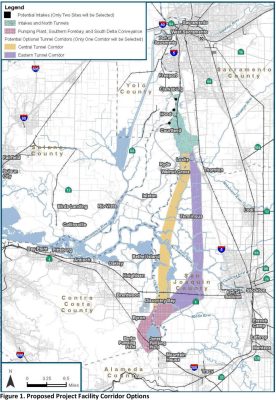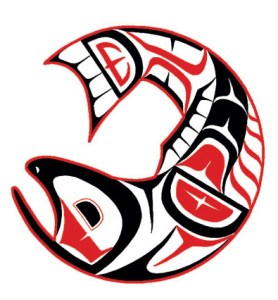Disastrous Delta Tunnel, Sites Reservoir still key components of updated CA Water Plan
 |
| Governor Newsom at April Snow Survey at Phillips Station. (Photo courtesy of DWR.) | |
By Dan Bacher |
- Creating a Flood-Managed Aquifer Recharge program, capturing and spreading flood flows to recharge aquifers – boosting the state’s water capture and storage abilities.
- Integrating climate science and research to help vulnerable communities defend against floods and drought.
California’s other actions to “boost water supplies” cited by Newsom include:
- Nearly $9 billion in water investments over the last three years.
- Expanded water supply and storage through groundwater recharge and other projects by over 400 billion gallons.
- Streamlining projects and limiting litigation delays to spur new and improved water infrastructure.
“During this year’s storms alone, the Delta Conveyance Project could’ve captured enough water to supply 9.4 million people; the streamlined Sites Reservoir Project could hold enough water for 3 million households’ yearly usage,” Newsom claimed.
“The Delta Conveyance is foundational, it’s critical, if we’re going to address the issue of climate change. It is a climate project. It is one of the most important projects this state can advance,” Newsom concluded.
Newsom said the water plan is directly tied into today’s snow survey, a key indicator of expected runoff that this plan helps both state and local governments capture and store. It recorded 64 inches of snow depth and a snow water equivalent of 27.5 inches, which is 113 percent of average for this location and above average overall.
DWR Director Karla Nemeth also gushed about the California Water Plan Update.
“With climate change posing uncertain challenges, California Water Plan Update 2023 highlights the importance of innovation and investments in the state’s watersheds, water systems, and frontline communities,” said Nemeth. “This plan helps build a future where all Californians can be more water resilient and how we can all take action to adapt our communities to thrive in more extreme weather conditions.”
Critics of Newsom’s Delta Tunnel, Sites Reservoir and other water policies said the final version of the California Water Plan asserts equity for “frontline communities,” yet ignores the negative impacts key projects will have on them.
In response, Barbara Barrigan-Parrilla, Executive Director of Restore the Delta, said, “Governor Newsom cannot claim to put water equity and frontline communities at the forefront of his plans while ignoring the catastrophic impact the tunnel will have on environmental justice communities that rely on the Delta for drinking water, food via fishing and farming, and recreation.”
“Dedicating a full chapter to tribal perspectives in the water plan is a start,” Barrigan-Parrilla said, “but the plan fails to protect tribal water rights for those who have stewarded Delta waterways and relied on the Delta for cultural, religious, and subsistence practices essential to tribal identity. We urge the governor to truly and adequately safeguard equity for frontline and tribal communities and prioritize the Bay-Delta Plan over boondoggle projects like the Delta tunnel.”
On January 22, a coalition of environmental and Tribal organizations took legal action in the Superior Court of California, County of Sacramento, against the California Department of Water Resources for violating the California Environmental Quality Act (CEQA) by finalizing the approval for Governor Newsom’s Delta Tunnel project in December 2023.
The groups filing the lawsuit against the Department of Water Resources included The Bay Institute, California Indian Environmental Alliance, Golden State Salmon Association, Restore the Delta, San Francisco Baykeeper, and the Shingle Springs Band of Miwok Indians. The groups are represented by Jason Flanders at Aqua Terra Aeris Law Group and by attorneys at San Francisco Baykeeper.
 DCA proposed Delta Conveyance project
DCA proposed Delta Conveyance projectBackground: salmon, steelhead and Delta Smelt continue on path to extinction
 California salmon, steelhead and other fisheries are in their worst crisis ever as Governor Newsom forges ahead with the Delta Tunnel and Sites Reservoir projects.
California salmon, steelhead and other fisheries are in their worst crisis ever as Governor Newsom forges ahead with the Delta Tunnel and Sites Reservoir projects.







Post a Comment